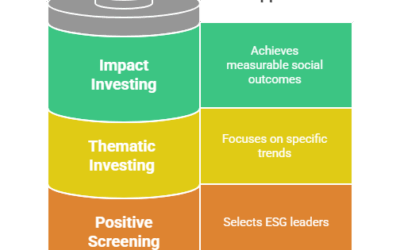For 2025, several significant tax changes have emerged that financial planners must consider when advising clients. These adjustments, influenced by legislative updates and inflationary measures, impact income tax brackets, standard deductions, retirement contributions, estate planning, and more. Staying informed is crucial to optimize tax strategies and ensure clients’ financial well-being.
1. Income Tax Bracket Adjustments
The IRS has revised federal income tax brackets for 2025 to account for inflation. While the tax rates remain unchanged, the income thresholds have shifted slightly:
2025 Federal Income Tax Brackets
| Tax Rate | Single Filers | Married Filing Jointly | Head of Household |
|---|---|---|---|
| 10% | $0 to $11,925 | $0 to $23,850 | $0 to $17,000 |
| 12% | $11,925 to $48,475 | $23,850 to $96,950 | $17,000 to $64,850 |
| 22% | $48,475 to $103,350 | $96,950 to $206,700 | $64,850 to $103,350 |
| 24% | $103,350 to $197,300 | $206,700 to $394,600 | $103,350 to $197,300 |
| 32% | $197,300 to $250,525 | $394,600 to $501,050 | $197,300 to $250,500 |
| 35% | $250,525 to $626,350 | $501,050 to $751,600 | $250,500 to $626,350 |
| 37% | $626,350 or more | $751,600 or more | $626,350 or more |
These adjustments may result in slight changes to clients’ tax liabilities. To optimize tax outcomes, it’s essential to review taxable income levels and consider strategies like income deferral or acceleration.
2. Increased Standard Deductions
The standard deduction amounts have risen for 2025:
- Single Filers: $15,000 (up from $14,600 in 2024)
- Married Filing Jointly: $30,000 (up from $29,200 in 2024)
- Head of Household: $22,500 (up from $21,900 in 2024)
These increases may influence the decision between itemizing deductions and taking the standard deduction. The higher standard deduction could simplify tax filing and reduce taxable income for many clients.
3. Retirement Contribution Limits and “Super Catch-Up” Provisions
Retirement savings opportunities have expanded:
- 401(k), 403(b), 457 Plans, and Thrift Savings Plan:
- Contribution Limit: $23,500
- Catch-Up Contributions (Age 50+): $7,500
- “Super Catch-Up” Contributions (Ages 60-63): $11,250
- IRAs (Traditional and Roth):
- Contribution Limit: $7,000
- Catch-Up Contributions (Age 50+): $1,000
The “super catch-up” provision allows individuals aged 60 to 63 to make additional contributions, significantly boosting retirement savings during these critical years. Advisors should assess clients’ eligibility and encourage maximizing contributions to leverage these limits fully.
4. Estate and Gift Tax Exemptions
For 2025, the federal lifetime estate and gift tax exemption has increased to $13.99 million per individual, up from $13.61 million in 2024. The annual gift tax exclusion has also risen to $19,000 per recipient. These adjustments provide enhanced opportunities for wealth transfer and estate planning. Given the potential sunset of these elevated exemptions after 2025, discussing gifting strategies and other estate planning tools with clients is prudent to maximize tax efficiencies.
5. Alternative Minimum Tax (AMT) Adjustments
The AMT exemption amounts for 2025 are:
- Single Filers: $88,100
- Married Filing Jointly: $137,300
These exemptions phase out at $626,350 for single filers and $1,252,700 for married couples filing jointly. High-income clients should review their exposure to AMT and consider strategies to minimize its impact, such as timing income and deductions appropriately.
6. Anticipated Legislative Changes
The Tax Cuts and Jobs Act (TCJA) provisions are set to expire at the end of 2025. Key areas potentially affected include:
- Individual Income Tax Rates: Reversion to pre-TCJA rates.
- Standard Deduction and Personal Exemptions: Adjustments to current amounts.
- State and Local Tax (SALT) Deduction Cap: Possible modifications or repeal.
- Estate and Gift Tax Exemptions: Potential reduction to pre-TCJA levels.
Financial planners should monitor legislative developments closely and proactively discuss potential impacts with clients, considering strategies to mitigate adverse effects, such as accelerating income or gifting before year-end.
7. State-Specific Tax Considerations
State tax laws may also change in response to federal adjustments. Some states are considering modifying or eliminating state income taxes, adjusting estate tax thresholds, or altering deductions for retirement income. Financial planners should stay informed about state-level tax changes that could impact their clients, including:
- State Income Tax Adjustments: Several states, such as Arizona and Georgia, have introduced flat income tax rates, while others are phasing out income taxes altogether.
- Retirement Taxation Changes: Some states, including Iowa and Missouri, have passed legislation to exempt Social Security benefits and retirement distributions from state taxation.
- State-Level Estate Tax Reforms: While the federal estate tax exemption remains high, some states like Massachusetts and Oregon still have lower estate tax thresholds that clients should plan for accordingly.
- SALT Deduction Workarounds: Certain states provide pass-through entity (PTE) tax elections to help business owners circumvent the $10,000 federal SALT cap, allowing them to deduct state taxes at the entity level instead of on personal returns.
Financial planners should monitor updates from state tax authorities and recommend strategies tailored to each client’s residency and financial situation. Reviewing state-specific deductions, credits, and tax breaks can lead to significant savings, particularly for retirees, business owners, and high-net-worth individuals.
Proactive Planning for 2025 and Beyond
The 2025 tax changes present challenges and opportunities for financial planners and their clients. While inflation-driven adjustments provide some relief, the potential expiration of TCJA provisions at the end of 2025 could significantly impact tax liabilities in the coming years.
Key action steps for financial planners include:
- Review income strategies – Consider accelerating income or deductions based on tax bracket adjustments and AMT exposure.
- Maximize retirement contributions – Take advantage of increased 401(k), IRA, and “super catch-up” provisions for pre-retirement clients.
- Plan for estate tax changes – Discuss gifting strategies before potential TCJA sunset reductions in 2026.
- Monitor state tax developments – Be aware of state-specific tax law shifts that could benefit or impact clients.
- Stay ahead of legislative changes – Keep clients informed and adjust long-term tax strategies as Congress debates new tax reforms.
Financial planners can help clients navigate the evolving tax landscape by staying proactive and adaptable, ensuring they minimize liabilities and optimize their financial outcomes in 2025 and beyond.
For the latest tax updates, visit:
The information provided in this article is for general informational purposes only and is based on sources believed to be reliable as of 2025. However, tax laws and regulations are subject to change, and individual circumstances may vary. Financial planners and taxpayers should verify all details with official sources such as the IRS, state tax authorities, or a qualified tax professional before making any financial or tax-related decisions. The author and publisher assume no responsibility for errors or omissions, nor for any actions taken based on the information provided.




